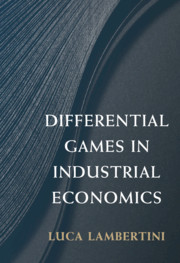5 - Product Differentiation
Published online by Cambridge University Press: 29 March 2018
Summary
The DNA helix of the material discussed in this chapter has a lot in common with the contents of Chapters 4 and 6, as it deals with competition based on non-price tools. Indeed, the effects of product differentiation on consumer behaviour are largely analogous to those exerted by advertising campaigns, and product differentiation is usually the outcome of firms’ investment in R&D.
However, this component of firms’ strategies deserves a place of its own, as is the case in the tradition of the theory of industrial organization, for (at least) two relevant reasons. The first is that it has spurred a large and productive stream of research on discrete choice theory, where it is explicitly admitted that there may not exist a representative consumer buying a basket including all goods supplied by any given industry. In fact, this subject is replaced by another with preferences focussed upon a detailed list of characteristics defining her/his preferred variety, and the resulting consumption choice is determined by a compromise between pure preferences, the actual varieties supplied by firms, market prices and consumer income. In the early stages of the construction of this part of IO theory, the discrete choice approach was often labelled as the address approach (Archibald et al., 1986), where the ‘address’ is the vector of coordinates identifying the position of any given product variety in the space of relevant characteristics. The alternative view connected with the figure of a representative consumer was accordingly defined as the non-address approach. In the latter framework, the typical modelization of product differentiation takes the form of a parametric preference for variety, dating back to Bowley (1924) and then revived by the modern version of monopolistic competition (Dixit and Stiglitz, 1977), the new trade theory (Helpman and Krugman, 1985, 1989), as well as IO (Singh and Vives, 1984). The second reason is that the discrete choice theory of product differentiation has produced new insights on the entry process and the evolution and long-run equilibrium configuration of industry structure. More explicitly, while under horizontal differentiation, in the vein of the Hotelling (1929) model, free entry drives prices to marginal cost and the degree of differentiation between adjacent varieties to zero, under vertical differentiation this outcome is impossible if quality improvements hinge upon fixed costs which can be likened to R&D costs (Gabszewicz and Thisse, 1980; Shaked and Sutton, 1983).
- Type
- Chapter
- Information
- Differential Games in Industrial Economics , pp. 125 - 148Publisher: Cambridge University PressPrint publication year: 2018



